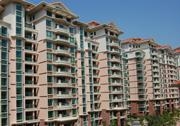High-density dramas
Sydney's suburban future will be one of clashes and complaints between neighbours unless developers, planners and residents act to address problems in high-density living, new research has found.
Sydney's suburban future will be one of clashes and complaints between neighbours unless developers, planners and residents act to address problems in high-density living, new research has found.

Sydney's suburban future will be one of clashes and complaints between neighbours unless developers, planners and residents act to address problems in high-density living, new research has found.
With about two-thirds of new housing in Sydney over the next 25 years to be some form of high-density, a report by UNSW's City Futures Research Centre for non-profit housing advocacy group Shelter NSW has found that the key problems of intrusive noise and smells and the use of parking and shared common areas are the most significant barrier to enjoying high-density living.
However, having better-designed, better-built and better-managed apartments, and educating people on how to live in higher density, can avoid a looming social and economic problem, said report lead author Dr Hazel Easthope, of the City Futures Research Centre.
Dr Easthope said high-density living was relatively new in Australia, compared with many European countries. International experience has shown that enjoyable high-density living is achievable but only if factors such as building design and construction quality are addressed.
"This is not just about neighbours not getting on. We're not being given the high density we deserve," she said.
The report, Living Well in Greater Density, reviewed more than 300 papers examining high-density living in Australia and overseas and found residents continually reported the same problems arising from noise and shared facilities.
Mary Perkins, Executive Officer of Shelter NSW, which commissioned the report, said the same issues were reported by public and private housing tenants and resident owners, regardless of their income or environment. This suggested that problems such as conflict over noise or use of common areas went beyond people simply failing to get along.
The report makes a number of suggestions including addressing building standards to minimise noise, designing buildings to provide shared areas for children to play, and investigating apartment management structures which encourage less turnover in rental tenancies, thus allowing stronger residential communities to form.
"We're going to be living in a more dense city in the future and more thought has to go into our building standards. High density doesn't have to mean sacrificing important quality of life," Ms Perkins said.
The full report is available here.
Media contact:Dr Hazel Easthope | 02 9385 6041| Mary Perkins, Shelter NSW | 02 9267 5733 ext.14 | 0419 919 091| Denise Knight, UNSW Media Office | 02 9385 8920